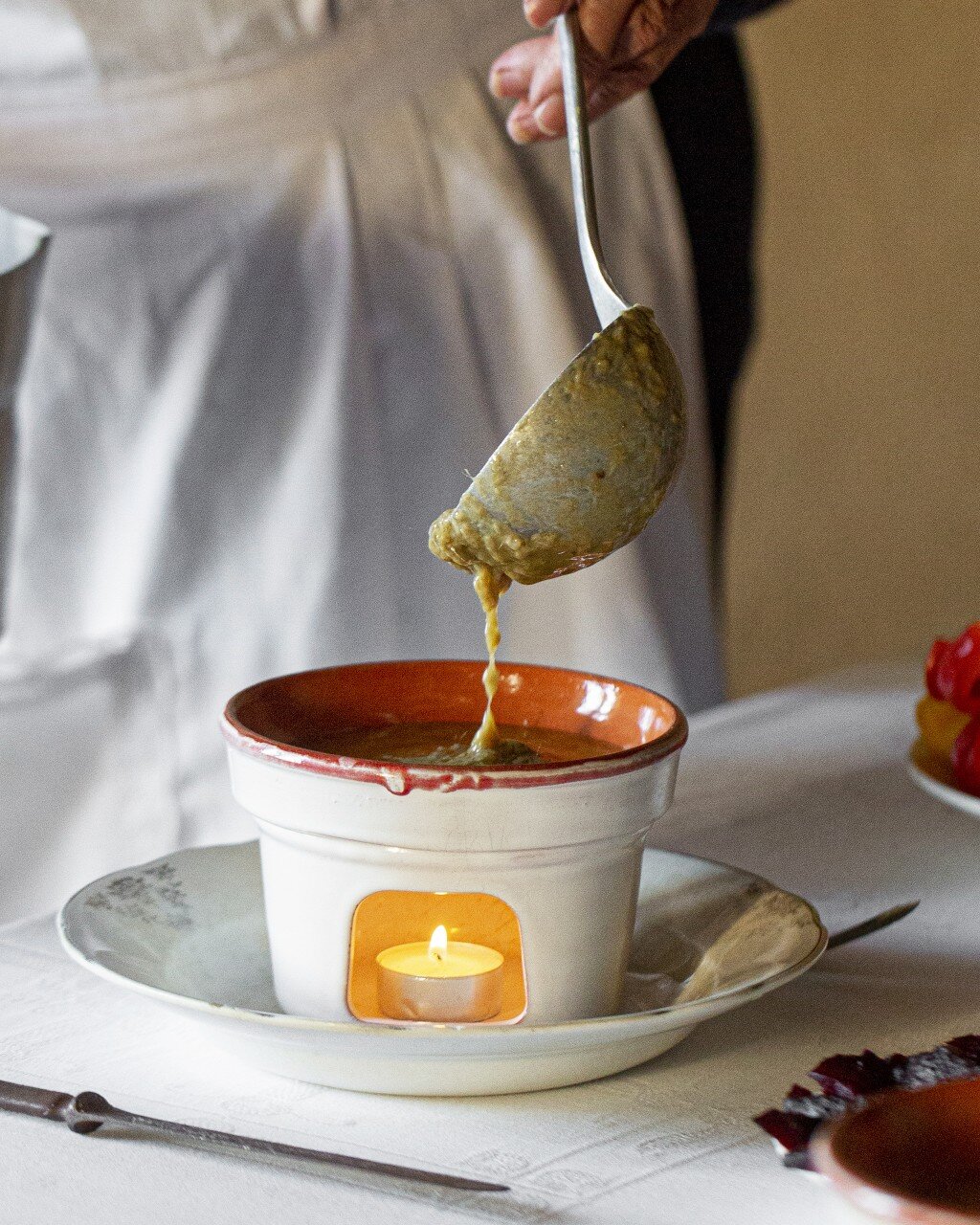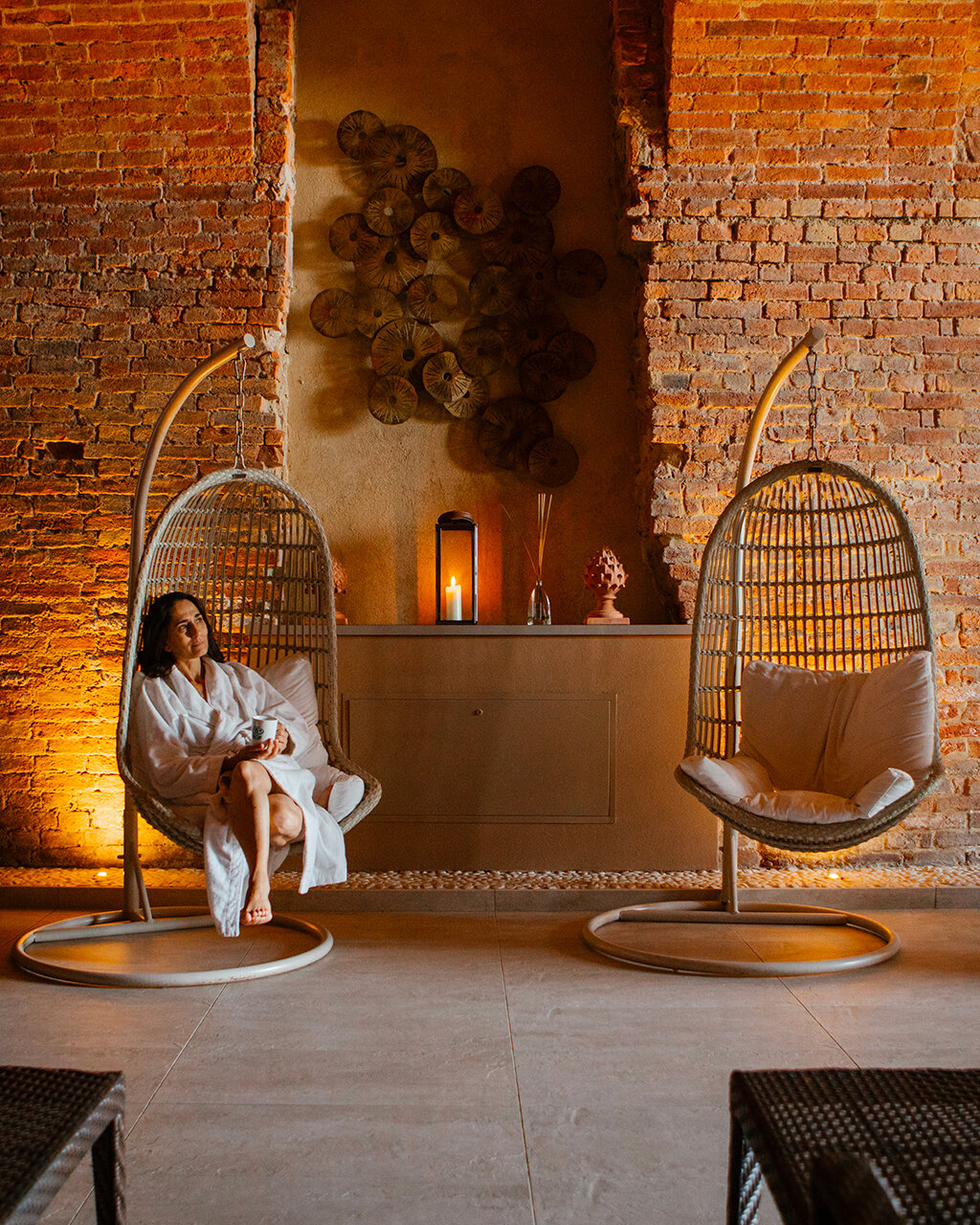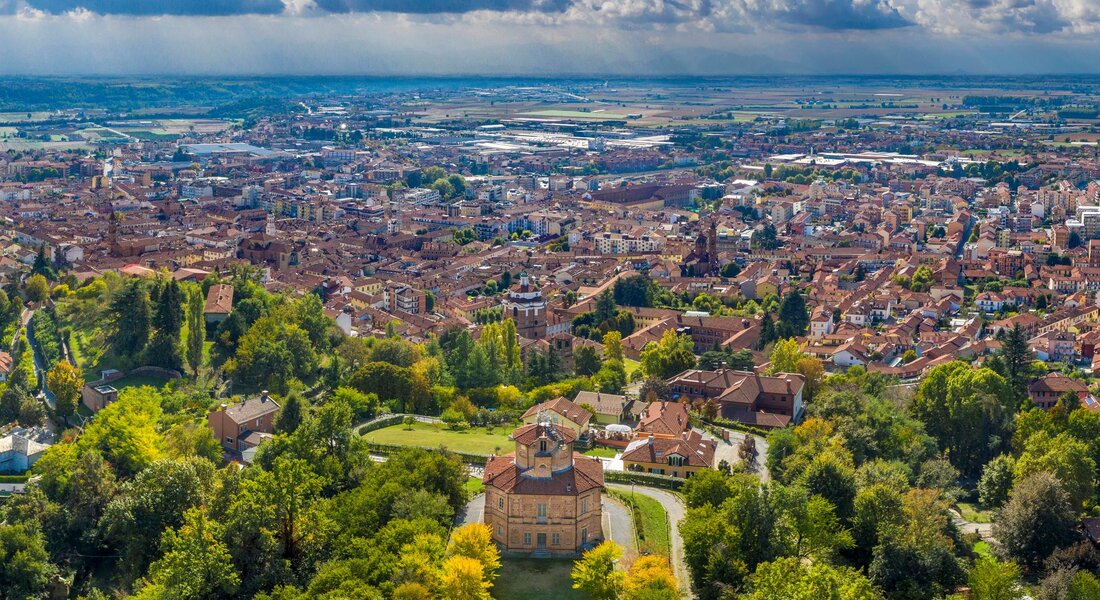Bra, the ancient rock of the De Brayda family, is the perfect starting point to explore the complicated geography of the Rocche of the upper Roero as well as to wander through the woods and fields which were once the "beach" of the proto-sea of the Adriatic and which covered the whole of the current Po Valley.
The Turin plateau was in fact the prehistoric shore of this sea. The Roero landscape is quite different from the one of the Langhe: the hills are steep, harsh but very close together; and here agroforestry happily reigns over the countryside rather than being based just on monoculture of vines.
From Bra (it.The Baroque “taste” of Bra), a charming Baroque village, the reference centre of this part of the Roero, we leave towards Pocapaglia, a small village perched on the first huge rock, with its Castle built by the Falletti family and revisited by Juvarra. It was here that about 300 years ago Michela, a poor woman from Barolo who had been accused of witchcraft and went down in history as the Masca Micilina, was put on trial, hanged and burned as a “witch”: she was probably the last woman to be burned at the stake in Italy. The first view of the Rocche is also a must-see. Here, they are surrounded by an aura of mystery mainly because of the Rocca dell’Eremita, where the hermit used to live on a cliff edge. The Ecomuseo Rocche e Masche (Ecomuseum Rocche and Masche) tells us the story of these hills.
Find out more
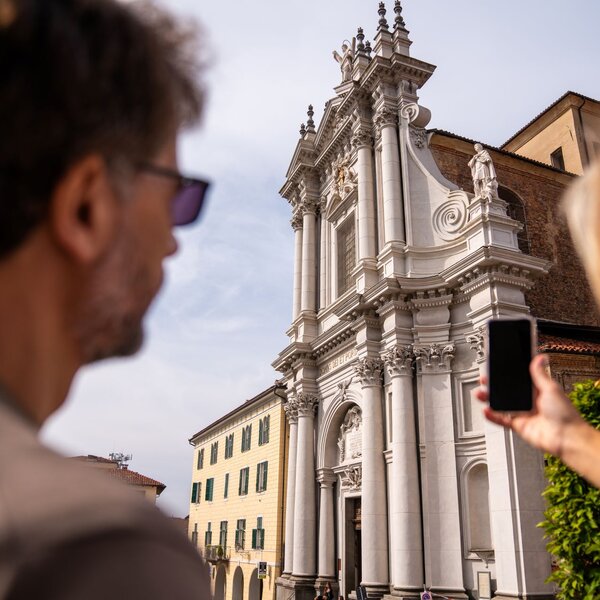
The Baroque “taste” of Bra
Find out moreAfter leaving Pocapaglia we find the first of the many surviving fortifications: the Roero Castle of Monticello d'Alba, which is open to the public, has preserved the imposing features of a fortress (whereas the interiors have been revamped as residence) and is evidence of the presence of the noble Asti family over a large part of the area which today is named after them (it was once known as Astisio). Always in Monticello d’Alba, the small San Ponzio cemetery Chapel (one of the oldest in the area) with rare frescoes dating back to the 10th, 11th and 14th centuries and Frammenti, a contemporary art installation by Valerio Berruti, are also worth a visit.
Another stop of great artistic value is San Francesco in Santa Vittoria d'Alba: the parish oratory houses a series of 19 scenes from the Passion of Christ, dated between the late 15th century and the first decades of the 16th century. Another must-see is also the climb up to the high Tower, twin to the one in Barbaresco, but it is covered, and the Gipsoteca (gallery of plaster casts) of the sculptor Gioachino Chiesa, while downstream there are the Reali Cantine (Royal Cellars) which were commissioned by King Charles Albert for the Cinzano brothers' experiments on sparkling wine. Finally, next to the cellars, you will find the “Glass Collection”, one of the most important collections of glassware in the world.
From the Tanaro Valley the route heads towards the Riddone Valley, a pretty little stream that flows through Corneliano d'Alba and Piobesi d'Alba: the countryside here is extremely lush and relaxing. Before us is Corneliano's rare decagonal Tower, which has now been restored and is watching over the red houses of the old town. A triumphal arch marks the return of the Savoy family after the Napoleonic domination.
Next, the road heads into the transverse valley that leads to Canale (it. Roero of Canale) and runs alongside many of the most important rocks. The following villages are all located on this imaginary prehistoric "shore", tightly nestled between the plateau and the ravines. We get to Santo Stefano Roero, a village that has lost its tower because of the erosion of the nearby gullies and from here we first go to Monteu Roero, with its beautiful private Castle, and then to Montaldo Roero where both the Romanesque parish Church and the belvedere with its tall cylindrical Tower are worth a mention.
Find out more
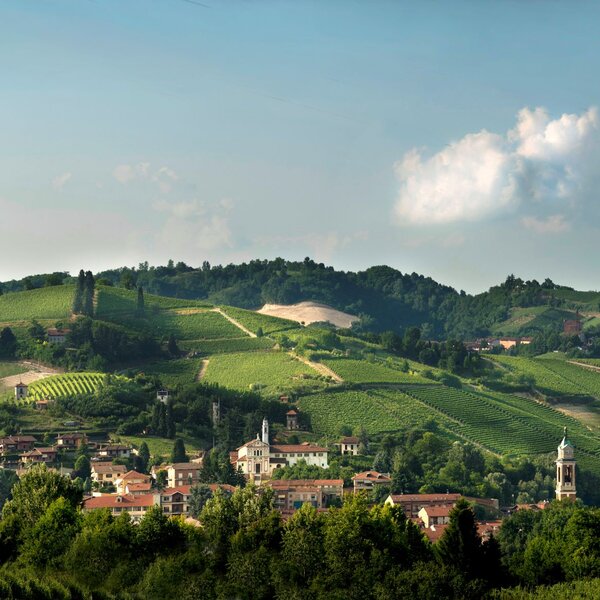
Roero Di Canale
Find out moreFrom the so-called Ponte dei Sapori (Bridge of Flavours), which jumps right over the rock, you can clearly see both the Castle of Monteu Roero and the one in Baldissero d'Alba, our next stop. It is a neo-Gothic building which was created by remodelling the old manor house: despite being private, it is quite impressive. The Romanesque apse of Sant'Antonino is equally evocative, today it is surrounded by woods but it is an obvious sign of the passage of the medieval road which is now lost. Baldissero d’Alba, like nearby Sommariva Perno, is famous for its delicious strawberries.
The last stop on this million-year-old " beach " is Sommariva Perno, a pretty village that preserves the Mirafiori Castle, which belonged to the "Bela Rosin", i. e. Rosa Vercellana, the morganatic wife of King Victor Emmanuel II. The nearby vast Parco Forestale del Roero (Roero Forest Park), over 100 hectares, is a beautiful green lung ideal to fully enjoy the pristine nature and biodiversity of the Roero area.
From Sommariva Perno we continue onto the Pianalto which connects the provinces of Cuneo, Turin and Asti, in particular it features the breeding of the renowned Tinca Gobba Dorata (golden hump tench) in special natural fishponds. The landscape changes radically, the land has turned red and crops alternate with large areas of woodland. But first we should stop in Ceresole d'Alba, the last village in the province of Cuneo, famous for the battle of 1544 between the French and the Spaniards which is well described in the brand new Museo della Battaglia (Battle Museum), located near the Roero Castle.
It is time to visit the other Sommariva, namely Sommariva del Bosco, a bigger and more bustling village with a wealth of churches and confraternities (including the baroque jewel of San Sebastiano) and its highly private but very scenic Seyssel d'Ax Castle, as well as a lovely idea like the Sleeping Beauty fairytale trail. Finally, one last stop in Sanfré which hosts the beautiful Isnardi Castle (which can be visited) and Romanesque traces in the apse of the small Church of the Holy Trinity (which is private though). From here we suggest you should travel back to the village via the hamlets of Saliceto and America dei Boschi.
PLEASE NOTE: Responsibility for the maintenance and practicability of the various trails lies with the municipalities where the routes are located. The Tourist Board, therefore, cannot be held responsible for any inefficiencies, but is willingly available to collect your reports so that they can be forwarded to the authorities concerned.
